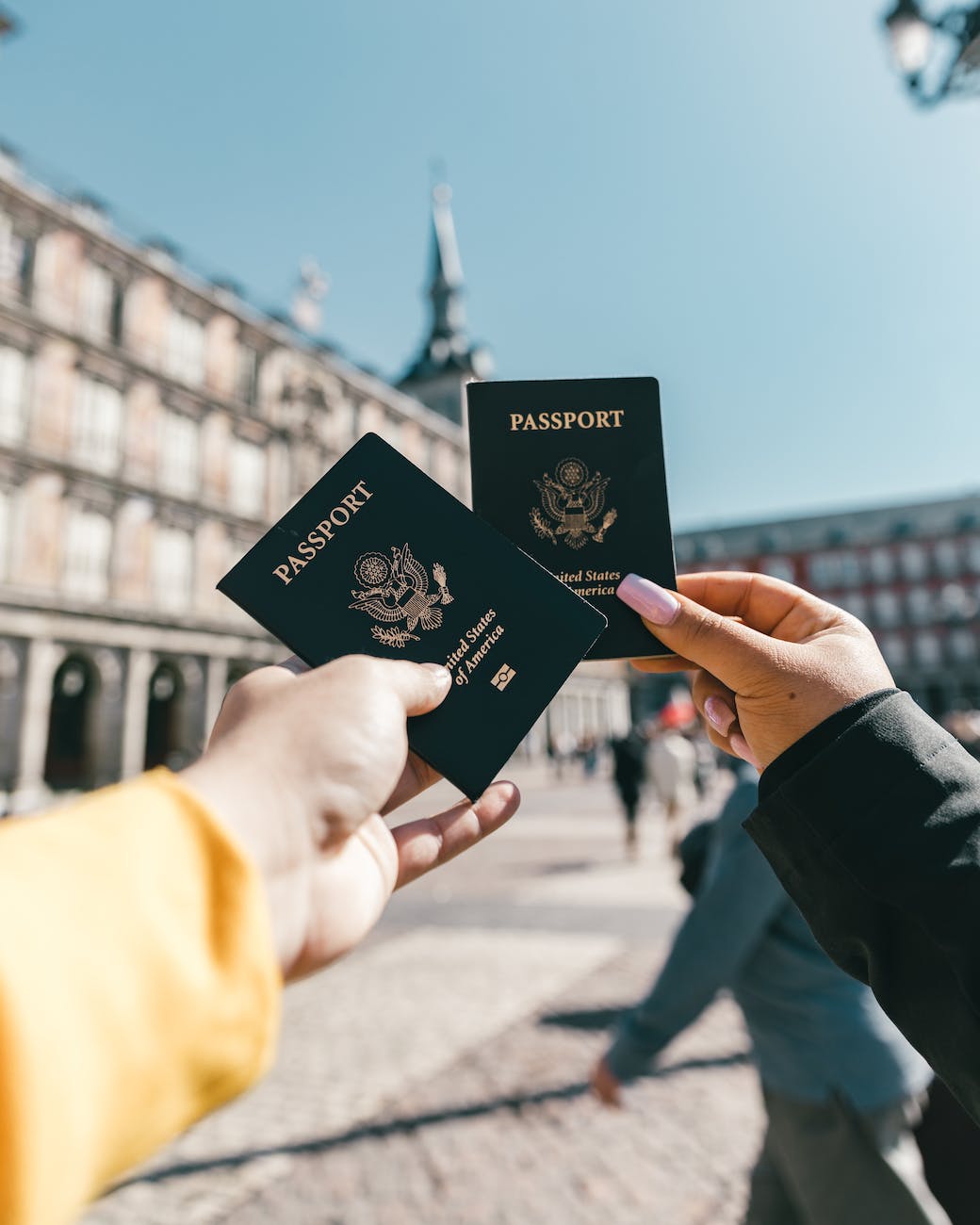Chapter 1: Introduction
The importance of passport safety during travel
Risks of losing your passport
Overview of the book’s contents
Passport safety is a crucial aspect of travel that every traveler should pay attention to. Losing your passport while traveling can cause a lot of stress and inconvenience, and it can also put you in a dangerous situation. In this response, I will discuss the importance of passport safety during travel, the risks of losing your passport, and provide an overview of the book’s contents related to this topic.
The importance of passport safety during travel cannot be overstated. Your passport is your most important travel document, and it serves as proof of your identity and citizenship. Losing your passport while traveling can cause a lot of problems, such as difficulty in boarding a plane or accessing certain countries, and can also make it challenging to return home. Moreover, if your passport falls into the wrong hands, it can be used for illegal purposes such as identity theft, and you may be held responsible for any crimes committed using your identity.
The risks of losing your passport are many. These include theft, misplacement, damage, and expiry. Passport theft is a common occurrence, especially in crowded areas such as airports and train stations. Misplacing your passport is also common, especially if you are carrying a lot of luggage. Damage to your passport, such as tearing or water damage, can make it unusable. Finally, passports have an expiry date, and if you fail to renew your passport before it expires, you may not be allowed to travel.
To avoid the risks associated with losing your passport, it is essential to keep your passport safe and secure. This includes keeping your passport with you at all times, locking it in a safe or secure location when not in use, and making copies of your passport and other important travel documents. Additionally, it is essential to be aware of the local laws and customs regarding passports in the countries you plan to visit.
A book on passport safety and travel would cover a variety of topics related to keeping your passport safe and secure. Some of the contents may include:
Understanding the importance of your passport: This chapter would discuss the significance of your passport and why it is crucial to keep it safe during travel.
Risks associated with losing your passport: This chapter would cover the various risks associated with losing your passport and the potential consequences of not having your passport while traveling.
Preparing for travel: This chapter would cover the steps you can take to prepare for travel, such as making copies of your passport, keeping your passport safe, and knowing the local laws and customs related to passports.
Protecting your passport during travel: This chapter would provide practical tips on how to keep your passport safe and secure during travel, such as using a money belt, avoiding pickpockets, and locking your passport in a safe.
Dealing with a lost or stolen passport: This chapter would cover what to do if your passport is lost or stolen, including how to report it to the authorities and how to get a replacement passport.
Overall, a book on passport safety and travel would be a valuable resource for anyone planning to travel internationally. By understanding the risks associated with losing your passport and taking steps to keep it safe and secure, you can enjoy your travels with peace of mind.
Chapter 2: On Your Person
The benefits and drawbacks of carrying your passport on your person
Tips for safely carrying your passport on your person
Carrying your passport on your person is a common practice for many travelers, as it provides a sense of security and convenience. However, there are both benefits and drawbacks to this practice that should be considered before deciding whether or not to carry your passport on your person. In this response, I will discuss the benefits and drawbacks of carrying your passport on your person and provide tips for safely carrying your passport.
Benefits of Carrying Your Passport on Your Person:
Quick access: Carrying your passport on your person means that you have quick and easy access to it at all times. This is especially important when traveling to countries that require you to show your passport frequently, such as when crossing borders or checking into hotels.
Security: Keeping your passport on your person can provide a sense of security, as it reduces the risk of losing or misplacing it. It also makes it less likely to be stolen, as you can keep it close to your body and monitor it closely.
Drawbacks of Carrying Your Passport on Your Person:
Theft: Carrying your passport on your person can make you a target for pickpockets and thieves. If you are not careful, your passport can be stolen or lost, which can cause significant problems while traveling.
Damage: Carrying your passport on your person can also lead to damage, such as getting wet or torn. This can render it unusable and cause significant problems while traveling.
Tips for Safely Carrying Your Passport on Your Person:
Use a passport holder: A passport holder can provide an extra layer of protection for your passport. Choose one that is designed to be worn around your neck or waist, under your clothes.
Be aware of your surroundings: When carrying your passport on your person, be aware of your surroundings and keep an eye out for suspicious behavior. Avoid crowded areas and be vigilant in areas where pickpocketing is common.
Use a secure storage option: If you are staying in a hotel, use a secure storage option such as a hotel safe to store your passport when you are not using it.
Make copies: Make copies of your passport and other important travel documents and keep them in a separate location. This will help you if your passport is lost or stolen.
In conclusion, carrying your passport on your person has both benefits and drawbacks. While it can provide quick access and a sense of security, it can also make you a target for theft and damage. By following these tips, you can safely carry your passport on your person while traveling and reduce the risks associated with this practice.
Chapter 3: In Your Accommodations
Safe storage options in hotels and hostels
The pros and cons of using a hotel safe
How to secure your passport in your room
When traveling, it is important to have a secure storage option for your passport and other important documents. Hotels and hostels offer various options for safe storage, but it is important to weigh the pros and cons of each before deciding which option to use. In this response, I will discuss safe storage options in hotels and hostels, the pros and cons of using a hotel safe, and how to secure your passport in your room.
Safe Storage Options in Hotels and Hostels:
Hotel safe: Most hotels offer a safe deposit box for guests to store their valuables, including passports. Some hotels have in-room safes, while others have safes at the front desk. Hostels may also offer safe storage options for their guests.
In-room lockers: Some hotels and hostels offer in-room lockers for guests to store their belongings, including passports.
Front desk storage: If a hotel or hostel does not have a safe deposit box, guests can ask the front desk to store their passport and other important documents for them.
Pros and Cons of Using a Hotel Safe:
Pros:
Secure storage: Hotel safes are designed to provide secure storage for valuables, including passports. They are often bolted to the wall or floor and require a combination or key to open.
Convenience: Hotel safes are a convenient option for storing passports and other important documents, as they are usually located in the guest room or at the front desk.
Cons:
Limited availability: Not all hotels have safes in their rooms, and some hotels may charge an additional fee for using the safe.
Potential for theft: While hotel safes are designed to be secure, there is still a risk of theft. In some cases, hotel staff may have access to the safe, which increases the risk of theft.
How to Secure Your Passport in Your Room:
Use a hidden spot: If you are staying in a hotel or hostel that does not have a safe, you can use a hidden spot in your room to store your passport. This could include a hidden pocket in your luggage or a secret compartment in your clothing.
Use a combination lock: If you are using an in-room locker or another storage option that requires a combination, make sure to choose a strong and unique combination.
Keep it out of sight: If you are storing your passport in your room, keep it out of sight by hiding it in a drawer or closet.
Use a locking device: Consider using a locking device, such as a cable lock or padlock, to secure your luggage and prevent unauthorized access to your passport and other important documents.
In conclusion, there are several safe storage options in hotels and hostels, including hotel safes, in-room lockers, and front desk storage. While hotel safes can provide secure storage, they may not be available in all hotels, and there is still a risk of theft. If you are storing your passport in your room, use a hidden spot, a combination lock, and a locking device to keep it secure.
Chapter 4: In Your Baggage
Choosing the right baggage for passport storage
How to secure your passport in a carry-on or checked baggage
Strategies for keeping your passport safe in transit
Choosing the Right Baggage for Passport Storage:
When traveling, it is important to choose the right baggage for storing your passport. Here are a few things to consider:
Size: Choose a bag that is large enough to comfortably fit your passport, but not so large that it is difficult to carry or easily misplaced.
Durability: Look for a bag that is sturdy and durable, as this will help protect your passport from damage.
Security features: Consider a bag that has security features such as locks, zippers, or other types of closures that can help prevent unauthorized access to your passport.
How to Secure Your Passport in a Carry-On or Checked Baggage:
Use a passport holder: A passport holder is a small, protective case that is specifically designed to hold your passport. These can be used to keep your passport safe and easily accessible in your carry-on or checked baggage.
Use a locking device: Consider using a cable lock or padlock to secure your luggage and prevent unauthorized access to your passport and other important documents.
Keep it on your person: If you are traveling with a carry-on bag, consider keeping your passport with you at all times to ensure that it does not get lost or stolen.
Strategies for Keeping Your Passport Safe in Transit:
Keep it close: When traveling, keep your passport close to you at all times. This could include carrying it in a passport holder or wearing it in a neck pouch.
Use a RFID-blocking sleeve: An RFID-blocking sleeve is a special type of sleeve that helps protect your passport from digital theft. These can be purchased online or at travel supply stores.
Make copies: Make copies of your passport and keep them in a separate location, such as in your checked baggage or with a trusted friend or family member. This can be helpful in case your passport is lost or stolen.
Be vigilant: Be aware of your surroundings and keep an eye out for any suspicious activity. If you notice anything unusual or feel unsafe, report it to a security officer or other authority.
In conclusion, choosing the right baggage for passport storage, securing your passport in your carry-on or checked baggage, and implementing strategies for keeping your passport safe in transit can all help protect your passport and other important documents while traveling. It is important to be vigilant and take necessary precautions to prevent unauthorized access or theft of your passport.
Chapter 5: Alternative Storage Options
Digital storage of passport information
Storing a copy of your passport in a separate location
Using a passport holder or travel wallet
Digital Storage of Passport Information:
Digital storage of passport information can be an effective way to keep a copy of your passport in case it is lost or stolen. This could include taking a photo of your passport or scanning it and saving it on your phone or other electronic device. However, it is important to keep in mind that digital storage comes with its own risks, such as the potential for hacking or theft of your device. It is important to take steps to protect your electronic devices, such as using strong passwords and enabling two-factor authentication.
Storing a Copy of Your Passport in a Separate Location:
In addition to digital storage, it can be helpful to keep a physical copy of your passport in a separate location, such as in your checked baggage or with a trusted friend or family member. This can be helpful in case your passport is lost or stolen and you need to prove your identity or obtain a replacement.
Using a Passport Holder or Travel Wallet:
Using a passport holder or travel wallet can be a great way to keep your passport and other important documents organized and easily accessible. Look for a holder or wallet that is sturdy and durable, and has security features such as zippers or other closures to help prevent unauthorized access to your passport.
It is important to note that while a passport holder or travel wallet can be helpful in keeping your passport safe, it is not a guarantee that your passport will not be lost or stolen. It is still important to take necessary precautions and be vigilant while traveling.
Overall, using a combination of digital storage, physical storage in a separate location, and a passport holder or travel wallet can help protect your passport and other important documents while traveling. It is important to take necessary precautions and be aware of your surroundings to prevent unauthorized access or theft of your passport.
Chapter 6: Emergency Situations
Steps to take if your passport is lost or stolen
How to obtain an emergency passport
Preparing for passport emergencies before you travel
Steps to Take if Your Passport is Lost or Stolen:
Report the loss or theft: Report the loss or theft of your passport to the local authorities as soon as possible. This will help prevent anyone from using your passport for illegal purposes.
Contact your embassy or consulate: Contact the nearest embassy or consulate of your home country for assistance. They can provide you with information on obtaining a new passport and can help you with other issues that may arise.
Obtain a police report: Request a police report or other official document from the local authorities to document the loss or theft of your passport.
Obtain a replacement passport: You will need to apply for a replacement passport. This process will vary depending on your home country and the country you are in, but typically involves filling out an application, providing proof of identity and citizenship, and paying a fee.
How to Obtain an Emergency Passport:
If you are traveling and your passport is lost or stolen, you may be able to obtain an emergency passport from your embassy or consulate. This type of passport is issued quickly and is usually valid for a limited period of time.
To obtain an emergency passport, you will need to provide proof of your identity and citizenship, such as a birth certificate or driver’s license. You may also need to provide a police report or other official documentation to show that your passport was lost or stolen.
Preparing for Passport Emergencies Before You Travel:
Before you travel, it is important to prepare for passport emergencies by taking the following steps:
Make copies: Make copies of your passport and keep them in a separate location, such as in your checked baggage or with a trusted friend or family member. This can be helpful in case your passport is lost or stolen.
Register with your embassy: Register with your embassy or consulate before you travel. This will make it easier for them to assist you in case of an emergency.
Know the contact information: Keep the contact information for your embassy or consulate with you at all times, so you can quickly reach out to them if needed.
Consider travel insurance: Consider purchasing travel insurance that includes coverage for lost or stolen passports.
By taking these steps before you travel, you can help prepare for passport emergencies and ensure that you are able to obtain a replacement passport quickly if needed.
Chapter 7: Conclusion
Recap of safe passport storage options
Final tips for passport safety during travel
Enjoying your trip with peace of mind
Recap of Safe Passport Storage Options:
Carrying your passport on your person: This option can provide quick and easy access to your passport, but it comes with risks. If you choose to carry your passport on your person, consider using a hidden money belt or other secure method.
Using a hotel safe: Many hotels and hostels offer safes for storing valuable items. While this can be a good option, it’s important to keep in mind that hotel safes are not foolproof and can sometimes be subject to theft or tampering.
Storing your passport in your baggage: If you choose to store your passport in your baggage, make sure to use a secure method, such as a locked suitcase or a TSA-approved lock.
Digital storage: Consider keeping a digital copy of your passport on your phone or other electronic device. However, keep in mind that this method comes with its own risks, such as the potential for hacking or theft.
Final Tips for Passport Safety During Travel:
Be aware of your surroundings: Stay alert and aware of your surroundings, especially in crowded or touristy areas where pickpocketing and theft are common.
Keep a low profile: Try to avoid drawing attention to yourself by displaying expensive jewelry or electronics, or carrying large amounts of cash.
Stay organized: Keep your passport and other important documents organized and easily accessible, so you don’t have to fumble through your bag or wallet when you need them.
Use common sense: Finally, use common sense when it comes to passport safety. If something doesn’t feel right, trust your instincts and take precautions to keep your passport and other valuables safe.
Enjoying Your Trip with Peace of Mind:
By taking necessary precautions and being vigilant, you can help ensure that your passport stays safe during travel. With a little bit of planning and common sense, you can enjoy your trip with peace of mind, knowing that your passport and other important documents are secure.
Appendix: Resources
Websites and apps for safe travel
There are a number of websites and apps that can help you stay safe while traveling. Here are a few to consider:
State Department Travel Advisory: The US State Department offers travel advisories for every country in the world. These advisories provide information about safety and security concerns, as well as any travel restrictions or requirements.
International SOS: International SOS provides a range of travel-related services, including emergency medical and travel assistance. They also offer a travel risk map that provides up-to-date information about safety and security risks in different parts of the world.
TripIt: TripIt is a travel organizing app that can help you keep all of your travel plans in one place. It can also provide real-time flight alerts and other travel updates.
Google Maps: Google Maps is a useful tool for navigating new cities and finding your way around. It can also help you identify safe areas to visit and avoid.
Sitata: Sitata is a travel safety app that provides real-time information about safety and security risks in different parts of the world. It also provides personalized travel advice and alerts.
TravWell: TravWell is an app developed by the US Centers for Disease Control and Prevention (CDC) that provides health and safety information for travelers. It also allows you to store your travel documents and vaccination records in one place.
By using these websites and apps, you can help stay informed and prepared while traveling, and help ensure that you have a safe and enjoyable trip.
Contacts for emergency passport assistance
If your passport is lost or stolen while traveling abroad, you can contact the nearest US embassy or consulate for assistance in obtaining an emergency passport. Here are a few resources to keep in mind:
US Department of State: The US Department of State provides a list of US embassies and consulates around the world, along with their contact information. You can find this information on their website at https://www.usembassy.gov.
Smart Traveler Enrollment Program (STEP): The US Department of State also offers a free service called the Smart Traveler Enrollment Program (STEP). By enrolling in STEP, you can receive important travel updates and alerts, and you can also provide the US embassy or consulate with your contact information in case of an emergency.
24/7 Emergency Assistance: The US Department of State also provides a 24/7 emergency hotline that you can call for assistance while traveling abroad. The number is +1-202-501-4444.
By keeping these resources in mind and knowing how to reach out for assistance in an emergency, you can help ensure that you are prepared for any passport-related issues that may arise while traveling abroad.
Printable packing list for passport safekeeping
Here’s a printable packing list for passport safekeeping that you can use when preparing for your next trip:
Passport Safekeeping Packing List:
Passport holder or travel wallet
Carry-on bag or backpack with a secure compartment for passport storage
Lock for checked luggage
Digital copy of passport stored in a secure location (e.g. email, cloud storage, USB drive)
Printed copy of passport stored in a separate location (e.g. hotel safe, trusted friend or family member)
Contact information for the nearest US embassy or consulate
Travel insurance information
Credit card and emergency cash stored in a secure location
Personal identification (e.g. driver’s license, state ID)
A photocopy of personal identification stored in a separate location
By using this packing list, you can help ensure that you have everything you need to keep your passport safe and secure while traveling.
In conclusion, keeping your passport safe during travel is crucial for a stress-free and enjoyable trip. Whether you’re carrying your passport on your person, storing it in a hotel safe, or using a travel wallet, there are many options for keeping your passport secure. It’s also important to have a plan in place in case your passport is lost or stolen, and to stay informed about potential safety and security risks in the places you’re traveling to. By following these tips and resources, you can help ensure that your passport stays safe and secure, and enjoy your travels with peace of mind.





Kgf chapter 2 Download nai ho Rahi …Link send kr dy Bro